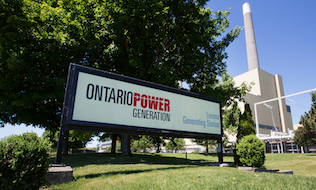
The Ontario Energy Board is ordering Ontario Power Generation Inc. to cut a substantial amount from its pensions and benefits costs by 2021.
In a report published last week, the province’s energy regulator said the electricity provider must cut a total of $500 million from its nuclear operations budget over the next five years. While the regulator cited issues such as compensation, corporate and administrative expenditures, including “excessive” pension and benefits costs, it isn’t able to specify the exact amount related to these costs.
According to the Ontario Energy Board’s report, retiree pensions and other post-employment benefits for the company’s nuclear business will cost an average of $329 million per year on a cash basis, and $355 million on an accrual basis, over the five-year period. In addition, it estimates the total costs for current employees will average more than $400 million per year on an accrual basis over those five years.
Read: Ontario pension accounting debate: Who’s right in the dispute over plan surpluses?
Ontario Power Generation’s programs for retired employees consist of two defined benefit pension plans, group life insurance, health-care benefits and long-term disability coverage.
The company’s 2016 annual report noted that Ontario Power Generation’s pension deficit increased to almost $2.7 billion as of Dec. 31, 2016, from $2.3 billion on Dec. 31, 2015. “This increase was largely due to a re-measurement of the liabilities at the end of 2016 reflecting lower discount rates, as well as current service and interest costs for the year, partially offset by the impact of the updated membership data as part of the 2016 actuarial valuation and employer contributions to the pension plan during the year.”
While the regulator’s report noted the sustainability of the company’s pensions and benefits has improved in recent years, it attributes that to an increase in pension contributions negotiated with its unions in the most recent round of collective bargaining. It called the company’s overall pension and benefits costs “clearly excessive,” pointing to evidence that demonstrates they’re above market. The evidence included a Willis Tower Watson benchmarking report that found the pension and benefits are 32 per cent more generous than those of comparable companies.
Read: Electricity sector pensions expensive: report
The utility has, in fact, come under scrutiny in the past for the high ratio of employer contributions to the pension plan in comparison to those of employees. “According to OPG, its contribution in 2015 was approximately 3:1, and it is expected to be approximately 2:1 in 2017,” the regulator’s report stated, although it also noted disagreements over the power company’s methodology used to calculate the ratio.
“Depending on exactly what employer expenses are included in the calculation, the contribution ratio was calculated to be closer to 3:1 or 4:1 in 2018,” the report stated.
Ontario Power Generation declined to comment on the specifics of the report but it did note in a press release that it’s reviewing the decision in detail.
Read: Should public pensions be subject to stronger transparency obligations?
Editor’s note: The article was amended on Jan. 8 at 2:25 p.m. to reflect a correction from the Ontario Energy Board. While it confirmed that $500 million is to be cut from Ontario Power Generation’s nuclear operations budget over the next five years, it isn’t able to provide an exact estimate of how much of that amount is associated with pension and benefits.
